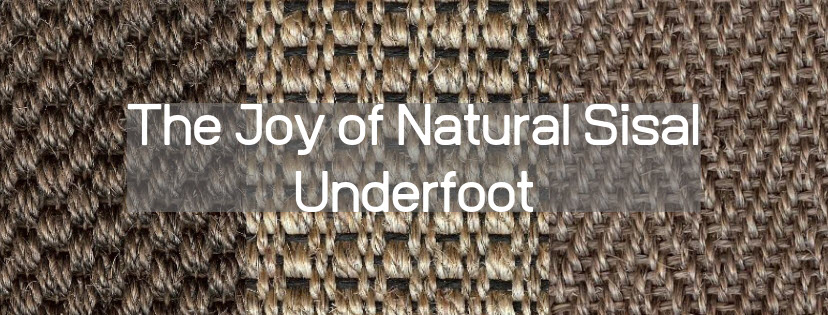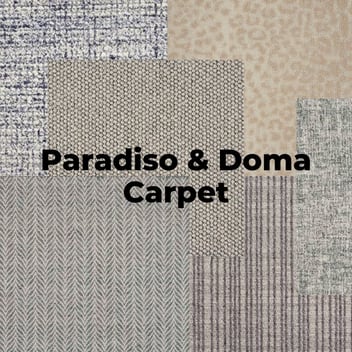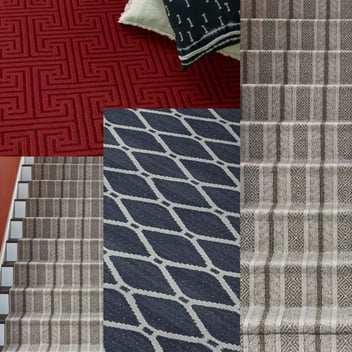From the Agave Sisalana Cactus!
Sisal fibers come from the Agave Sisalana cactus. These have been used literally for thousands of years not just for rugs, but also for rope and twine. Interestingly, sisal fiber is even found today in hats and bags as well as paper, plaster, automotive parts, and carpet backing material.
According to How is sisal harvested?, the process is as follows:
"The strong sisal fibers are extracted from the plant’s long, green leaves, then washed, sun-dried, brushed, graded, and bailed on the plantations. Each leaf of the agave plant contains about 1,000 fibers, and one plant produces around 200 leaves during its productive life cycle. Because the agave sisalana grows easily and is incredibly fruitful, it’s no wonder the plant is used in so many products."
Strong Green Characteristics
Further contributing to sisal's natural reputation is that every aspect of production is green, starting with the growth of the plant which requires no fertilizers, through final production:
"While the plant is harvested and processed, it generates mostly organic waste, and the leftover parts of the plant are used as bioenergy, animal feed, and fertilizer. Our Tanzanian plantations use the plant residue to produce electricity in rural areas and feed local livestock. Every part of the plant is used, making sisal an excellent renewable resource.
With Natural Variation
When you select sisal rugs, you need to expect natural variation in size and shade. You're dealing with a natural product after all; slight weaving and shade irregularities are common characteristics.
And when it comes to exposure to direct sunlight, you can expect an effect similar to unfinished wood: it fades ever so gently.
What Makes Sisal Rugs an Ideal Natural Flooring Choice?
In addition to being renewable and biodegradable, sisal creates rugs that are easy to maintain and durable for residential end uses.
- Sisal's hard, natural vegetable fibers do not attract dust.
- Bacteria can't penetrate the sisal fibers.
- Sand and fine dirt don't damage sisal rugs as they do conventional floor coverings. Rather than sit on the surface, soil filters through the weave.
- Those tough, natural sisal fibers are less vulnerable to abrasion.
- The textures of sisal rugs are delicious underfoot.
Sisal Rugs Prevent Static Buildup
Here's one more characteristic to consider, especially given how dry Connecticut winters can be: Sisal rugs prevent static electricity buildup! The reason is that sisal is hygroscopic and absorbs moisture from the air.
Three Classic Sisal Rug Styles
With all that buildup about the benefits of Sisal rugs, you're surely ready to see how beautiful they look. Well, here are three styles you can experience for yourself at Floor Decor Design Center.
1. Thames Sisal Carpet from DMI
Below you see Thames Sisal Carpet in the color Kent Black. This style comes in a width of 13'2" with a latex backing. Notice the dark yarn going across the construction; that's what changes the character of the different colors in this style.
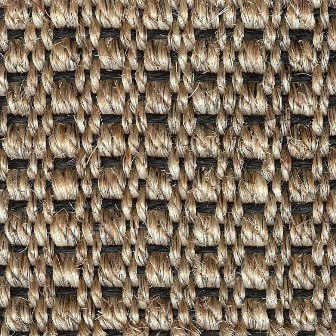
2. DragonGrass from DMI
DragonGrass features a pineapple-type pattern on a diagonal. It, too, is 13'2" with a latex backing. Below, you see the color Buckhorn.
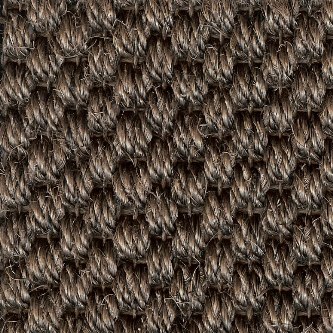
Other colors include Ashland, a lighter shade, and Edgewood which has lighter yellow tones.
3. Astute Sisal Carpet from DMI
Last and not least is Astute in color Clovis Stone which features a subtle V-pattern. This 100% Sisal rug style comes in 13'2" wide with a latex backing.
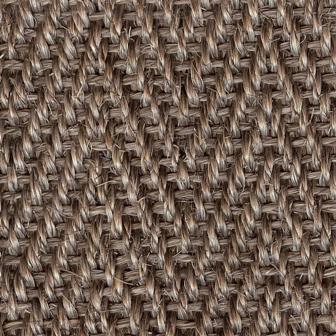
Other colors include Curry House - with a touch of curry yellow tone - Friendly Tan - a touch warmer than Clovis Stone - Institution Grey - with warm grey tones - and Traveler Brown - with light sun-touched tones.
Questions About Designing with Sisal Rugs
Can sisal carpet go on stairs?
Although you may prefer to use sisal as a rug, you can use it as a carpet and use it for runners and stairs.
Where can you place sisal rugs?
Sisal carpets and rugs are ideal for inside the home given how resilient and durable a flooring surface they create, and how easy they are to clean (more on that below). That means you can use them in entryways, in the dining room, in the living room, and anywhere else that can benefit from softness underfoot.
It is best not to place them where they can be saturated with water. The reason is that this may lead to dimensional changes.
What options can you bind your sisal rugs with?
Good question! As you can see in the image below, you have plenty of options when it comes to binding your sisal rug. More specifically:
- Basketweave linen binding in many colors
- Canvas
- Faux leather
- Polyester
In terms of finish, you can choose a blind mitered corner, a folded corner, and a rug with serging around the edges.
HOW TO CARE FOR Your DMI Sisal Rugs
As with any flooring investment, you'll want to care for your sisal carpet or rug, so it retains its beauty for years to come. Here are some tips.
- Vacuum regularly and frequently - ideally with a strong suction vacuum cleaner.
- Remove spills immediately.
- Avoid steam-cleaning and wet shampooing.
Spot Cleaning
Immediate attention to spills is the most important for spot removal from sisal and seagrass carpets, as it is with most floor covering. The spilled substance should be removed as soon as possible by blotting up with clean, un-dyed paper towels or cloths, or scraped up with a dull knife or nail file.
>> Read Sisal and Seagrass Maintenance and Cleaning
You'll find more advice and guidance in this article: Top Flooring Maintenance Tips for Carpet and Hardwood.
Consider a Spritz or Two of Water
If you are in an extremely dry environment, you may want to lightly spray water on your sisal rug. This will help get rid of looseness or bubbling on the surface.
Similarly, if you notice curled rug corners, you can place a damp towel on the area and weigh it down with something heavy overnight.
By the way, be sure to always vacuum first before spritzing any water!
EXPERIENCE Sisal Rugs FOR YOURSELF!
Intrigued with sisal for your home? Check out these styles as well as many other carpet styles at Floor and Decor Design Center! We have two showroom locations in Middletown and Orange, Connecticut, and look forward to helping you.
Let us know of any questions in the comments or contact us.
Thanks for reading,
Janine & Michael
 Note: We originally published this article on 06/12/2019, and have updated it.
Note: We originally published this article on 06/12/2019, and have updated it.


